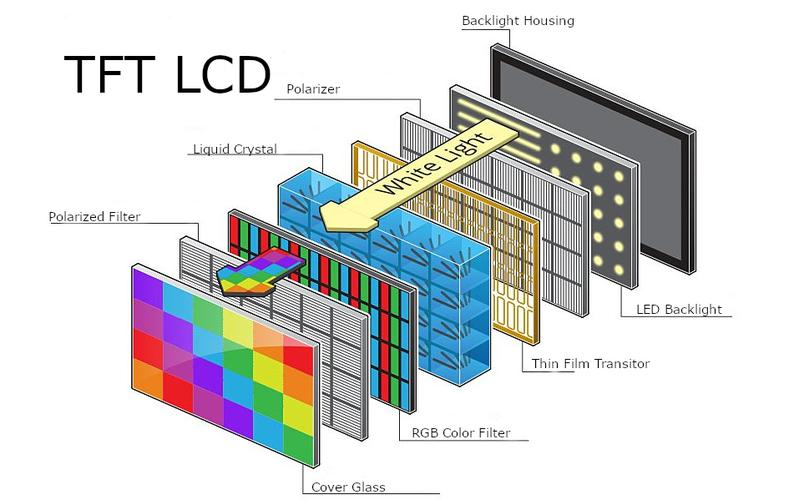FaceLCD Hong Kong Limited
Tel: +8615818692944
E-mail: sales@facelcd.com
Address: 13F, Buiding B, Colorful Tech Park, Guanlan High tech park, Longhua Dist, Shenzhen,China ZIP code 518100
You are here: Home > Technology >
A TFT LCD (Thin-Film Transistor Liquid Crystal Display) module is a type of flat-panel display that uses thin-film transistor technology to improve image quality and performance. Here are some key points about TFT LCD modules:
1.Structure: A TFT LCD module consists of multiple layers, including a backlight, polarizers, color filters, liquid crystal material, and a TFT array. The TFT array is a grid of transistors that controls the voltage applied to each pixel, allowing for precise control of the display’s brightness and color.
2.Pixels: Each pixel in a TFT LCD is controlled by its own transistor, which allows for faster response times and better image quality compared to older LCD technologies like passive matrix displays.
3.Resolution: TFT LCD modules can support high resolutions, making them suitable for applications that require detailed images, such as smartphones, tablets, computer monitors, and televisions.
4.Color Accuracy: The use of color filters and precise control over each pixel allows TFT LCDs to produce accurate and vibrant colors.
5.Applications: TFT LCD modules are widely used in various electronic devices, including mobile phones, laptops, digital cameras, medical equipment, industrial control systems, and automotive displays.
6.Advantages:
7.Disadvantages:
8.Technological Variants: There are several variants of TFT LCD technology, including:

Overall, TFT LCD modules are a versatile and widely-used display technology that balances performance, cost, and image quality for a broad range of applications.
Overall, TFT LCD modules are a versatile and widely-used display technology that balances performance, cost, and image quality for a broad range of applications.